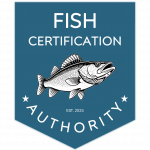
HOW TO GET CERTIFIED
Step 1. Catch a trophy sized fish that is on our list
Step 2. Follow our rules and regulations when catching and recording the fish
Step 3. Fill out the submission form, including submitting a photo of your fish and purchase your award level
Step 4. Get certified. Once the fish has been confirmed, you will be added to the FCA online database and start or continue your journey to the FCA Hall of Fame.

To become a Certified Angler, you must be able to provide/abide by the criteria below:
1. Catching Qualifying Fish:
• Species: Certification can only occur with certain species
• Size: Each species will have a minimum size requirement. This is often a significant length or weight that surpasses the average for that species.
• Legal Methods: Fish must be caught using legal and ethical angling methods (rod and reel, hook and line, etc.).
2. Documentation and Submission:
• Accurate Measurements: Precise measurements of the fish are crucial.
• Photographs: High-quality photographs are required. These should clearly show the fish alongside a measuring device and, in some cases, also the angler.
• Submission Process: Applications are submitted online.
3. Other Potential Requirements:
• Conservation: Certified Angler emphasizes conservation efforts, such as practicing catch-and-release for certain species or participating in fish stocking programs.
• Angling Ethics: Certified Angler requires responsible angling practices, such as following fishing regulations, respecting other anglers, and minimizing environmental impact.
RULES AND REGULATIONS
1. Essential Equipment
Measuring Device: A rigid ruler, fish measuring board, or a flexible tape measure are all acceptable. The measuring device should have clear, easy-to-read markings in inches or centimeters, with increments down to at least 1/8 inch or 0.1 centimeters.
Flat Surface: A flat, stable surface is necessary to ensure accurate measurement. This could be the deck of a boat, a flat rock, or any other level area.
Camera: A camera or smartphone to take a clear photograph of the fish alongside the measuring device.
2. Handling the Fish
Minimize Stress: Handle the fish with care to minimize stress. Wet your hands before handling the fish to protect its slime coat.
Keep it Straight: Ensure the fish is lying straight along the measuring device. Do not curve or bend the fish, as this will result in an inaccurate measurement.
3. Measurement Technique
Mouth Closed: The fish’s mouth should be closed naturally. Do not force it open or closed.
Snout to Tail: Measure the fish from the tip of its snout (the most forward point of the head) to the end of the tail fin.
Tail Fin Position: For most fish, measure to the farthest tip of the tail fin. If the tail fin is forked or has extensions, measure to the end of the longest lobe. Some programs may specify measuring to the fork of the tail for certain species (like paddlefish or sturgeon), so check the program’s specific rules.
Straight Line: Ensure the measurement is taken in a straight line. Do not follow the curve of the fish’s body.
4. Taking the Photograph
Clear Visibility: The photograph must clearly show the entire fish alongside the measuring device. The markings on the measuring device should be easily readable.
Proper Angle: Take the photograph from directly above the fish to avoid parallax error.
Additional Photos: It’s often recommended to take additional photos of the angler with the fish, but the photo with the measurement is the most critical for certification.
5. Recording the Measurement
Record Immediately: Record the measurement immediately after taking the photograph to avoid forgetting it.
Be Precise: Record the measurement to the nearest 1/8 inch or 0.1 centimeters.
Important Notes
Program Rules:
Release: If the fish you are catching is catch-and-release, return the fish to the water as quickly and safely as possible after taking the necessary measurements and photographs.
By following these guidelines, you can ensure that your fish measurements are accurate and meet the requirements for fish certification.